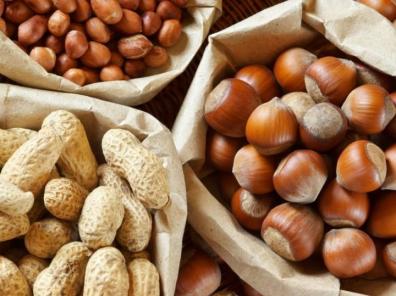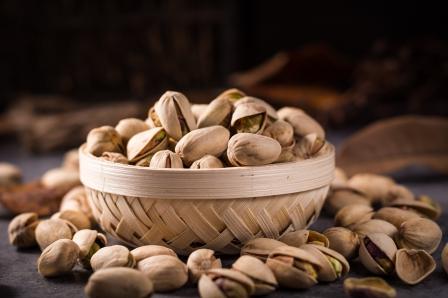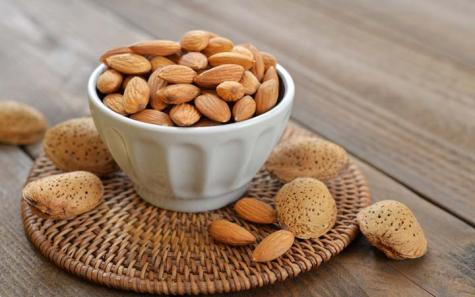Peanuts are more than just a popular snack; they are packed with nutrients and offer a range of culinary possibilities. Buying peanuts in bulk can be a cost-effective way to incorporate this versatile ingredient into your diet or business. In this comprehensive guide, we will explore everything you need to know about buying peanuts in bulk, including the health benefits, various types of peanuts available, how to store them properly, and creative ways to use them in cooking. Let’s dive into the world of peanuts in bulk and discover the many reasons to love this humble legume. Health Benefits of Peanuts: Peanuts are a nutrient-dense food that offers a range of health benefits. They are an excellent source of plant-based protein, making them a great choice for vegetarians and vegans. Peanuts are also rich in monounsaturated fats, which are heart-healthy fats that can help lower cholesterol levels.
.
Additionally, peanuts are a good source of fiber, vitamins, and minerals such as vitamin E, folate, magnesium, and potassium. Research has shown that including peanuts in your diet may help lower the risk of heart disease, diabetes, and other chronic conditions. The antioxidants found in peanuts can also help reduce inflammation in the body and protect against oxidative stress. With their impressive nutritional profile, it’s no wonder that peanuts are considered a superfood. Types of Peanuts Available in Bulk: When buying peanuts in bulk, you have a variety of options to choose from. Some of the most common types of peanuts include: 1. Raw Peanuts: These are unroasted and unsalted peanuts that can be used in a wide range of recipes, from peanut butter to stir-fries. 2. Roasted Peanuts: Roasting enhances the flavor of peanuts and gives them a crunchy texture. Roasted peanuts are a popular snack and can also be used in baking and cooking. 3. Salted Peanuts: Salted peanuts are roasted peanuts that have been seasoned with salt for a savory flavor. They are a classic snack option but may not be suitable for those watching their sodium intake. 4. Unsalted Peanuts: For a healthier option, unsalted peanuts are a great choice. They allow you to control the amount of salt in your dishes and snacks.
..
5. Blanched Peanuts: Blanched peanuts have had their skins removed, giving them a lighter appearance. They are often used in confectionery and baking. 6. Redskin Peanuts: Redskin peanuts have a red-colored skin that adds a unique visual appeal to dishes and snacks. They are commonly used in Thai and Indian cuisines. Choosing the right type of peanuts will depend on your preferences and the recipes you plan to use them in. It’s a good idea to experiment with different types to discover your favorites and how they enhance the flavors of your dishes. How to Store Peanuts in Bulk: Proper storage is essential to maintain the quality and freshness of peanuts when bought in bulk. Here are some tips on how to store peanuts effectively: 1. Airtight Container: Transfer your peanuts to an airtight container to protect them from moisture, light, and pests. Mason jars or food-grade plastic containers are good options for storing peanuts. 2. Cool, Dark Place: Store your peanuts in a cool, dark place such as a pantry or cupboard. Avoid placing them near heat sources or in direct sunlight, as this can cause the peanuts to spoil faster. 3. Refrigeration: While not necessary, you can extend the shelf life of peanuts by storing them in the refrigerator. Make sure they are in an airtight container to prevent absorbing odors from other foods.
…
4. Freezing: To prolong the shelf life of peanuts even further, you can freeze them. Place the peanuts in a resealable freezer bag and remove as much air as possible before freezing. When ready to use, allow the peanuts to thaw at room temperature. By following these storage guidelines, you can enjoy the freshness and flavor of your bulk peanuts for an extended period. Creative Ways to Use Peanuts in Cooking: Peanuts are a versatile ingredient that can be used in a variety of sweet and savory dishes. Here are some creative ways to incorporate peanuts into your cooking: 1. Peanut Butter: Homemade peanut butter is easy to make and allows you to customize the ingredients to your liking. Spread it on toast, add it to smoothies, or use it as a dip for fruits and vegetables. 2. Thai Peanut Sauce: Combine peanuts with coconut milk, soy sauce, lime juice, and spices to make a delicious Thai peanut sauce. Use it as a dip for spring rolls, a dressing for salads, or a sauce for stir-fries. 3. Peanut Crusted Chicken: Crushed peanuts can be used to create a crunchy coating for chicken or fish. Simply coat the protein in crushed peanuts before baking or frying for a flavorful and textured dish. 4. Peanut Noodles: Toss cooked noodles with a sauce made from peanut butter, soy sauce, rice vinegar, and sesame oil for a quick and tasty meal. Add vegetables, protein, and garnishes of your choice for a well-rounded dish.




Your comment submitted.